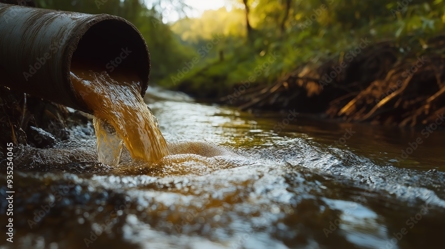Water damage can strike any home at any time, but Omaha residents face unique challenges due to our diverse weather patterns and proximity to the Missouri River. From frozen pipes in winter to basement flooding during spring storms, understanding water damage categories is essential for protecting your property and family's health. This comprehensive guide will help you identify different types of water damage, understand their risks, and know when to seek professional help.
How Do You Identify Different Types of Water Damage in Omaha Homes?
Omaha's unique climate, with its humid summers and freezing winters, creates distinct water damage challenges for homeowners. Understanding water damage categories is crucial, especially considering the Missouri River's influence on our region's moisture levels and the increased risk of basement flooding during severe storms. The age and construction of homes in neighborhoods like Dundee and Aksarben, many built in the early 1900s with materials vulnerable to water damage, makes this knowledge even more vital.
Water damage in Omaha homes typically stems from various sources, including burst pipes during harsh winters, spring flooding, and severe thunderstorms that are common in the Midwest. Each type of water damage falls into specific categories based on contamination levels and potential health risks. The city's proximity to the Missouri River and its tributaries increases the likelihood of water-related issues, particularly in older neighborhoods with aging infrastructure.
What is Category 1 Water Damage?
Category 1 water damage, often called "clean water" damage, originates from sanitary sources. In Omaha homes, this frequently occurs from broken water supply lines, especially during winter when temperatures drop below freezing. Other common sources include overflow from bathroom sinks in high-rise apartments downtown or malfunctioning appliances in newer developments like West Omaha.
This category poses the lowest health risk to occupants, but quick action remains essential. Omaha's varying humidity levels can cause Category 1 water to degrade to Category 2 within 24-48 hours, particularly during humid summer months when moisture lingers longer in affected materials. The city's seasonal temperature fluctuations can accelerate this degradation process, making immediate response crucial.
How to Handle Category 1 Water Damage
When dealing with Category 1 water damage, time is crucial. The combination of Omaha's seasonal temperature fluctuations and older home construction materials can accelerate water absorption into walls and flooring. Immediate steps include securing the water source and removing standing water to prevent further damage.
Professional water extraction should begin promptly, especially in homes with wooden structures common in neighborhoods like Field Club or Happy Hollow. The longer water remains, the higher the risk of structural damage and mold growth, particularly in our region's climate. Local building materials, such as the limestone foundations found in many historic Omaha homes, require special consideration during the drying process.
What Makes Category 2 Water Damage Different?
Category 2 water damage, known as "grey water," contains significant contamination levels. In Omaha properties, this often results from sump pump failures during heavy rainfall or dishwasher overflows. The city's older plumbing infrastructure, especially in established neighborhoods like Bemis Park, can contribute to this type of damage.
This category poses moderate health risks due to chemical or biological contaminants. In Omaha's climate, Category 2 damage can quickly escalate to Category 3 if not addressed promptly, particularly during warm periods when bacterial growth accelerates. The city's aging sewer systems and frequent summer storms increase the likelihood of Category 2 incidents.
Common Sources of Category 2 Water Damage in Omaha
Local property owners frequently encounter Category 2 water damage from various sources unique to our region. Understanding these sources helps in prevention and quick response:
Heavy storms overwhelming drainage systems, especially in areas near Papillion Creek Washing machine overflows in apartment complexes HVAC system condensation issues during humid summers Sump pump backups during spring thaws
How Dangerous is Category 3 Water Damage?
Category 3 water damage, or "black water," presents the highest health risk to Omaha residents. This type often occurs during Missouri River flooding or severe sewer backups, particularly in lower-lying areas of the city. The combination of our region's clay-heavy soil and aging sewer systems increases the risk during heavy rainfall events.
This category requires immediate professional intervention due to the presence of harmful pathogens and toxins. Category 3 damage is particularly concerning in historic properties like those in the Gold Coast district, where original materials can quickly absorb contaminated water. The impact on Omaha's characteristic brick and limestone structures can be severe, requiring specialized restoration approaches.
Health Risks Associated with Category 3 Water Damage
Understanding the severe health implications of Category 3 water damage is crucial for Omaha homeowners. This type of damage can lead to serious consequences if not properly addressed:
Serious illness from exposure to pathogens Long-term respiratory issues from contaminated particles Structural integrity problems in homes, especially those built with materials common to Nebraska architecture Increased risk of chronic health conditions due to prolonged exposure
The presence of sewage, chemical contaminants, and other harmful substances makes Category 3 water damage particularly dangerous in our climate. Omaha's temperature variations can accelerate the growth of harmful bacteria and mold, making professional intervention even more critical.
Need Professional Water Damage Restoration in Omaha?
When facing any category of water damage in your Omaha property, don't wait to take action. ServiceMaster of South Central Omaha understands our local climate challenges and building characteristics. We provide specialized restoration services tailored to Omaha's unique environmental conditions and construction types. Contact us immediately for professional assessment and restoration services to protect your home and family's health.


